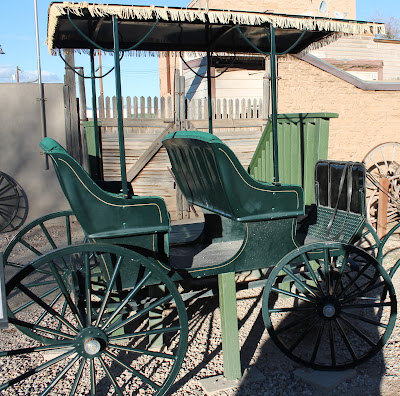 |
| The 1.5 mile hiking trail began relatively easy with wide paths that was easy to follow. |
 |
| Desert grasslands dominate the lower slopes. The chaparral is characterized by tough evergreens, which can form dense thickets of silk tassel, manzanita and mountain mahogany. |
 |
| Yucca and prickly pear grow along the hiking trail. |
 |
| An overlook down on to the cemetery. All soldiers from the original Fort have been exhumed and reintered in other military cemeteries. |
 |
| It was a surprised to come around a turn to find this Desert Globemallow or Apricot mallow still blooming. |
 |
| Almost at the top, we the pups were glad for a short rest. The grade became steeper and more rocky. All of us were happy for the overcast skies. |
 |
| Fort Bowie and Apache Pass were central to US Army operations against the Chiricahua (Chirr-i-KAH-wa) Apache for control of this region. Two well-known tribe members were Cochise and Geronimo. |
 |
| A large two-story brick house was built for the Commanding Officer and his family. Two daughters were married in that house to Fort officers. |
 |
| A total of 38 structures make up the ruins. Between 1862 and 1886, Fort Bowie was the nerve center for military campaigns against hostile Chiricahua Apaches led first by Cochise and then by Geronimo. |
Butterfield RV Resort, Benson, Arizona - 11 December 2018
 |
| We made four dinners of cannelloni and two dinners of ravioli paired with my homemade marinara sauce. We are getting used to our smaller accommodations. |
Titan Missile Silo, Sahuarita, Arizona - 13 December 2018
 |
| Over my right shoulder is the access portal. To the right of the photo is the missile silo with the steel reinforced concrete hatch. |
 |
| Gary, our guide waits for his partner to go down the access portal to check for rattlesnakes. All clear and we descend down the stairs. |
 |
| As opposed to the two man crew of the Minuteman Missile, the Titan missile station required a four man crew plus many maintenance and security personnel. |
 |
| There were no astronauts at any of the silos. These are suits worn by the maintenance crews that worked around the fuel which was very caustic and poisonous. |
 |
| First stage engine, only about 3 feet across exhaust funnel. |
 |
| A lovely view from the Silo parking lot. |
MAIL CALL, Benson, Arizona - 16 December 2018
 |
| "Night Sky" weaving from our sister-in-law, Julie Douglas. Another homey touch to our new-ish quarters. |
Tombstone, Arizona - 18 December 2018
 |
| Lunch at the Longhorn Restaurant. |
 |
| Decorated for the holidays with photos of the baseball teams (behind Bob) and the basketball team (behind me). |
 |
| The stage is set for the "Gunfight at the OK Corral". |
 |
| Morgan, Virgil and Wyatt Earp. |
 |
| Thirty bullets in 30 seconds, the Earps with Doc Holliday (foreground) take down Frank and Tom McLaury with Ike and Billy Clanton, |
 |
| Animatronics outside the stage area. |
 |
| And a collection of buggies, buckboards, wagons and a surrey with fringe on top. |
 |
| What are they going to do with these? Since there are names on them, shouldn't they be in the ground. I mean, it's not like they are reusable. |
 |
| The Mail wagon is now used to drive tourists around for a tour of "The Town That is Too Tough to Die". |
 |
| The main street is closed to traffic and adorned with a large Christmas tree. |
 |
| City Hall built in 1882. There have been several fires in the downtown area so many of the storefronts are rebuilt. |
































